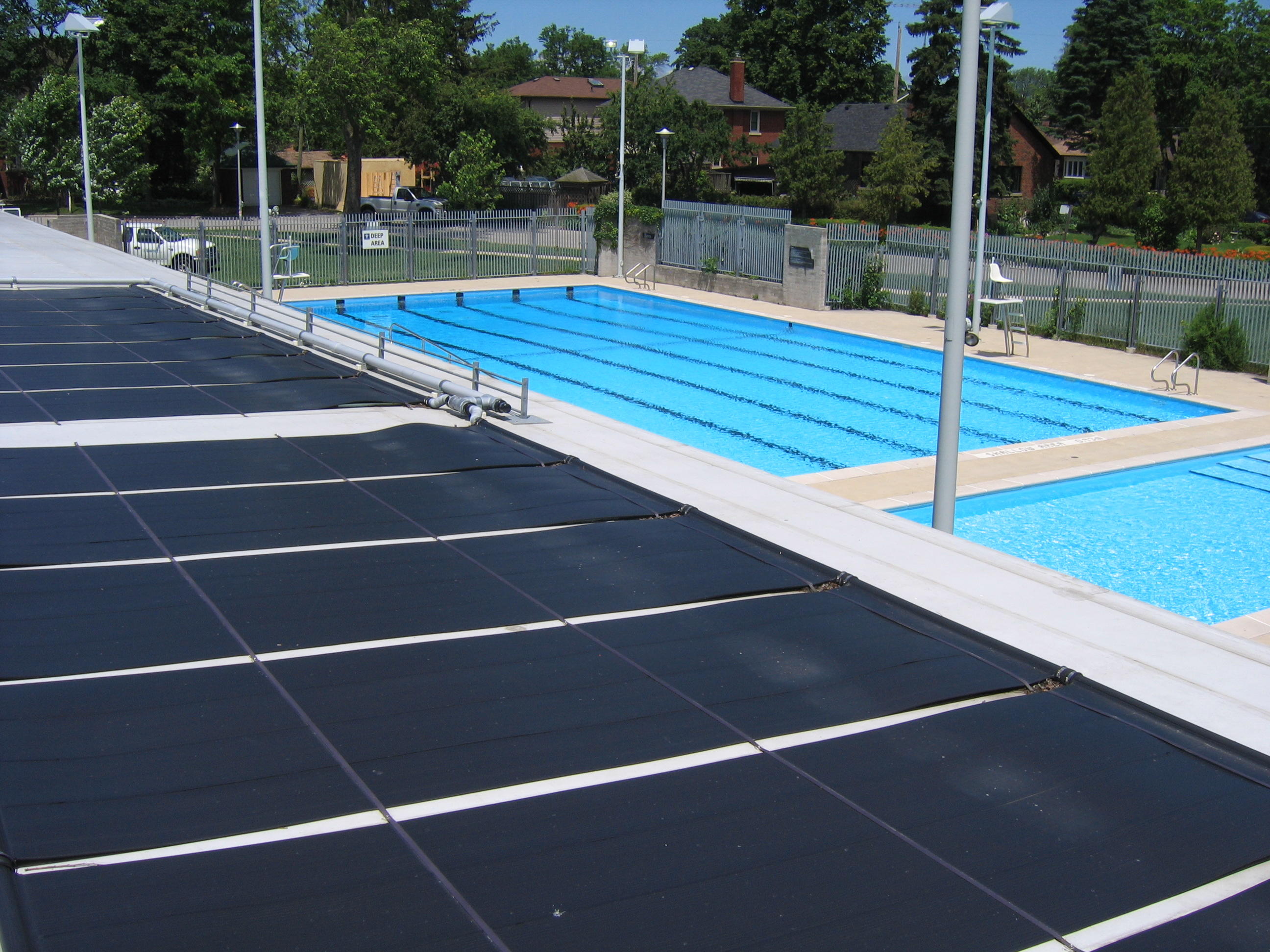Solar Pool Heating
 There are different types of solar pool heating systems that vary according to the application. One of the most cost-effective and simplest applications is the use of unglazed solar collectors (also called solar pool heaters) to heat residential swimming pools during the summer months. The term “unglazed” refers to the fact that the collectors do not have a front glass. Unglazed collectors will produce warm, rather than hot, water and do so at a lower efficiency, but the lack of a front glass and enclosure makes them significantly less expensive. Operation is simple. The solar collectors heat up in the sun and a circulator pump engages to circulate pool water through the warm collector.
There are different types of solar pool heating systems that vary according to the application. One of the most cost-effective and simplest applications is the use of unglazed solar collectors (also called solar pool heaters) to heat residential swimming pools during the summer months. The term “unglazed” refers to the fact that the collectors do not have a front glass. Unglazed collectors will produce warm, rather than hot, water and do so at a lower efficiency, but the lack of a front glass and enclosure makes them significantly less expensive. Operation is simple. The solar collectors heat up in the sun and a circulator pump engages to circulate pool water through the warm collector.
In non-residential applications, like municipal swimming pools, health regulations require that a heat exchanger isolate the collectors from the pool water. A municipal swimming pool might use either glazed or unglazed collectors, but it is worth noting that an unglazed system will produce minimal useful heat during the colder months. Multi-use municipal pools often present a challenge for the integration of solar water heating because warm water temperatures are typically required at the very beginning of the day prior to there being any sunlight. This issue can be alleviated somewhat by integrating the solar hot water systems with both the pool and the domestic hot water (DHW) plumbing circuits, creating a load that is better matched to the solar resource. Solar hot water systems may also be effectively deployed to preheat incoming fresh water, which may be required to keep the total dissolved solids within the pool water at healthy levels.
Solar hot water heating systems work best when in the hands of knowledgeable building personnel. However, with the incorporation of online monitoring gateways, modern controllers make the task of operating them easier than ever.
